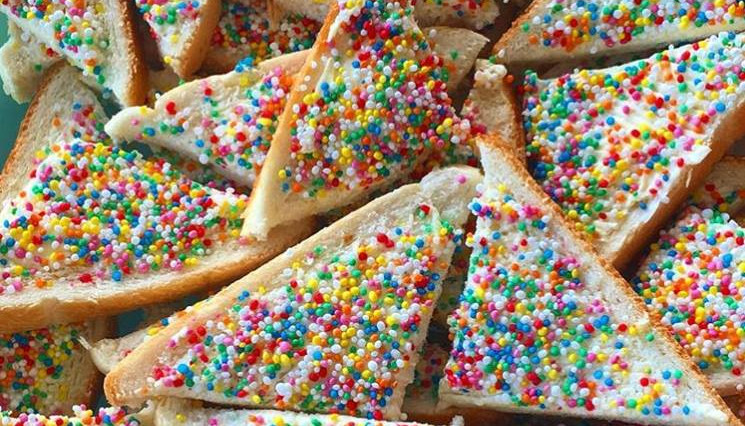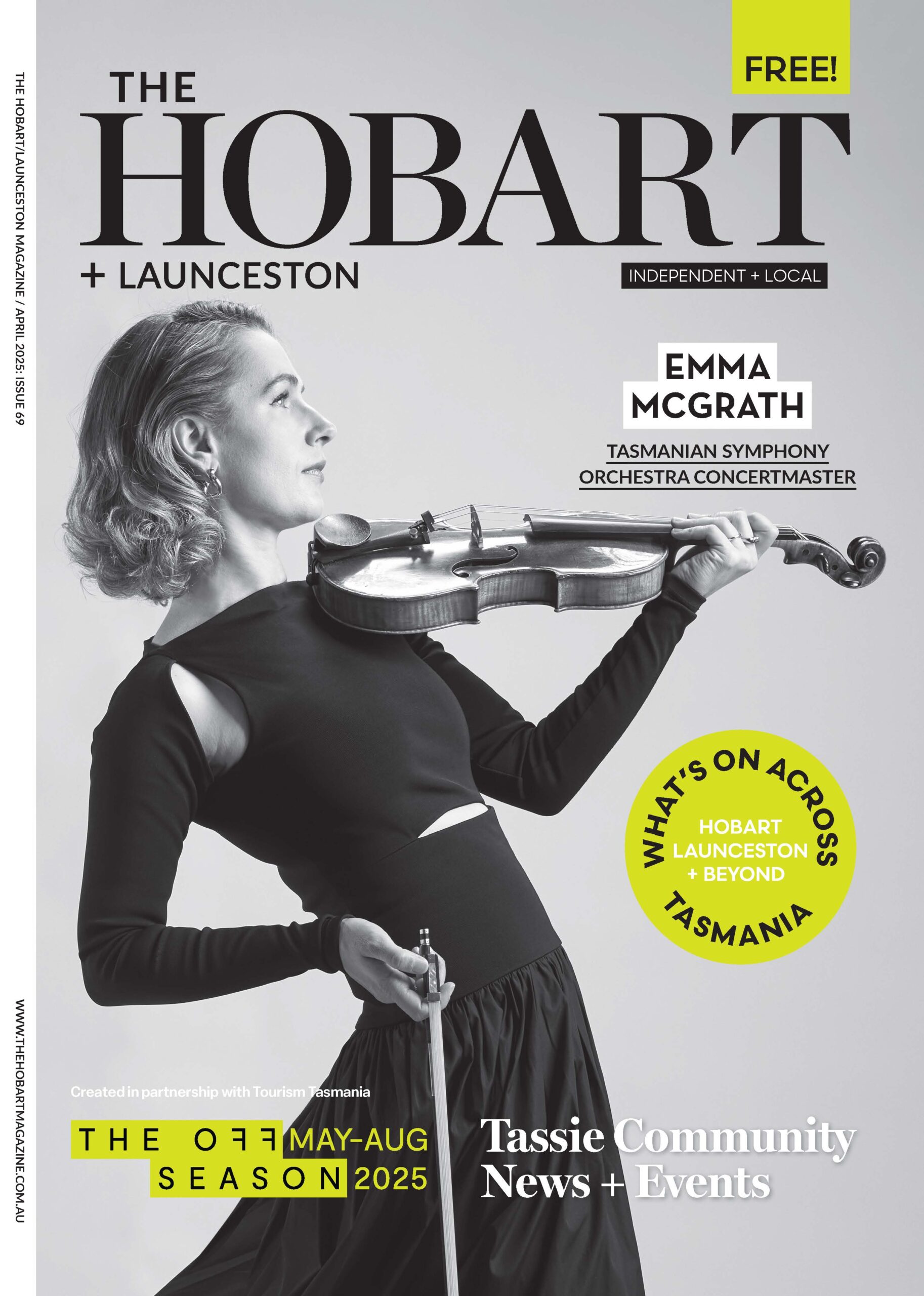Fairy Bread: the Surprising Tasmanian Origins of Australia’s Party Snack
by Hobart Magazine

If you grew up in Australia, chances are you’ve tried fairy bread at some point at a birthday or Christmas party. White bread, smothered in butter or margarine and coated in Hundreds and Thousands, were likely found alongside other party classics – sausage rolls, chocolate crackles – and gobbled up by eager little hands. For many Australians, this simple, easyto- make snack brings back childhood memories. A sugary, buttery, carby dose of nostalgia. But where did this delightful party snack come from? Surprisingly, the answer could be our very own island home, Tasmania.
The term “bread and butter” dates back to the Middle Ages, and Hundreds and Thousands (or sprinkles) have been around since the 1700s. Combining them into the fairy bread we know today is a relatively recent invention. Indeed, the earliest reference to fairy bread appears in a 1929 news snippet from Hobart’s The Mercury on ANZAC Day. To quote, “The children will start their party with fairy bread and butter and 100s and 1,000s, and cakes, tarts, and home-made cakes…”
And there it is! The first documented mention of fairy bread as we know it: bread, butter, and sprinkles. But what is the context behind this party? The answer is not exactly cheerful. The children in question were referred to as “Sunbeams” in the paper because they were residents of the children’s Sunbeam Chalet at the Consumptive Sanatorium, a facility that treated patients with tuberculosis. The New Town facility opened in the early 1900s in response to an outbreak and operated until after WWII. Sadly, these were ill kids having a party where fairy bread was present. It’s a sobering reminder of the prevalence of tuberculosis at the time, though the story mentions that the public donated money and sweets so the children could hold this party.
While this is compelling evidence for fairy bread being a Tasmanian invention, it’s difficult to say for sure. The treat was evidently well-known enough by 1929 to be in the paper. Its next mention didn’t come until 1934, when The Sydney Morning Herald referred to it in an article titled Christmas Dinner with Toddlers. Parents were advised to serve their children “a slice of fairy bread with sponge cake and the usual drink of milk.” Now it’s national.
This could be where the story ends. After all, these being the earliest mentions of fairy bread leads to a pretty open-and-shut case, but from here there’s a few intriguing paths to follow. Because we kind of lied. Yes, these are the first mentions of fairy bread in Australia, but they’re not the first time fairy bread as a concept has appeared in literature. Time to go back a few more decades.
Robert Louis Stevenson was a Scottish writer, known for classics like Treasure Island and Strange Case of Dr Jekyll and Mr Hyde. In 1885, he published a collection of poems for children called A Child’s Garden of Verses. One of the poems within is titled…Can you guess? That’s right, it’s Fairy Bread. Here it is:
Come up here, O dusty feet!
Here is fairy bread to eat.
Here in my retiring room,
Children, you may dine
On the golden smell of broom
And the shade of pine;
And when you have eaten well,
Fairy stories hear and tell.
Plot twist! Could this poem be about the fairy bread we know today? A fun thought, though unlikely. The whimsical tone and repeated use of “fairy” in the poem suggest Stevenson was writing about something magical, maybe even bread made by fairies. However, it IS possible that the name “fairy bread” came from this poem. Stevenson was widely read, and his works were embedded in the public consciousness. It’s not out of the realm of possibility that someone eventually connected the dots between his poem and today’s beloved party treat. Alternatively, the name might have been inspired simply by fairy bread’s colourful appearance, because fairies are often associated with pretty, vibrant things.
Lastly, it’s worth looking into a treat similar to fairy bread from halfway around the world. Hagelslag is a popular Dutch snack made by sprinkling sweet chocolate sprinkles on buttered bread, often eaten for breakfast or lunch. Sound familiar? The name “hagelslag” actually refers to “hail,” as the sprinkles resemble hailstones. According to historical records from the Amsterdam City Archives, it was first invented in 1919.
Despite the similarities, there’s no direct link between fairy bread and hagelslag. Fairy bread is almost exclusively enjoyed in Australia and New Zealand, whereas hagelslag remains a Dutch thing, rarely found outside the Netherlands and former Dutch colonies. This is simply a case of two similar snacks evolving independently around the same time.
So, there you have it, the history of fairy bread and its surprising Tasmanian connection. For such a simple snack – just three ingredients – fairy bread has earned its place in Australian culture.

